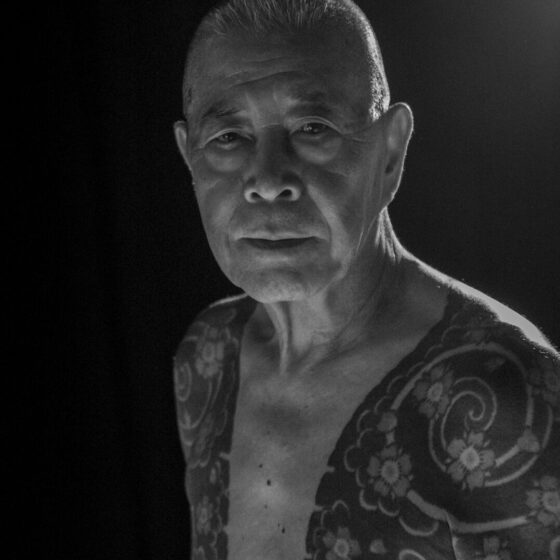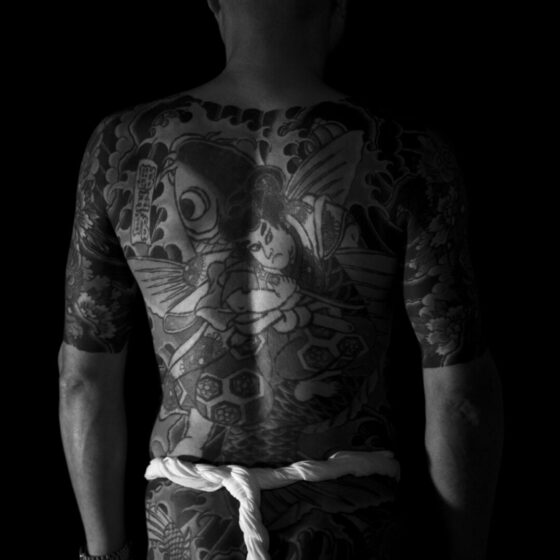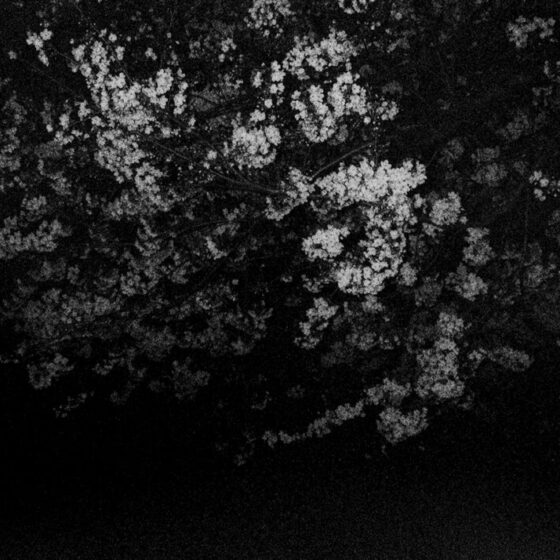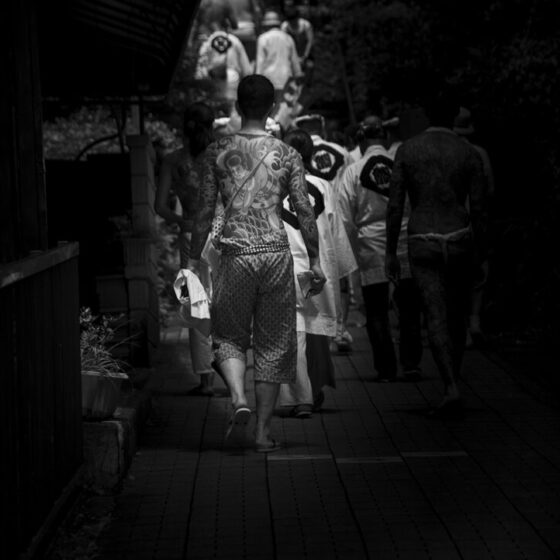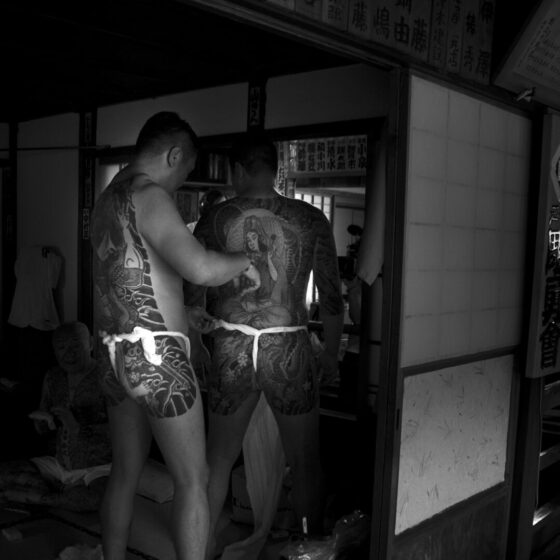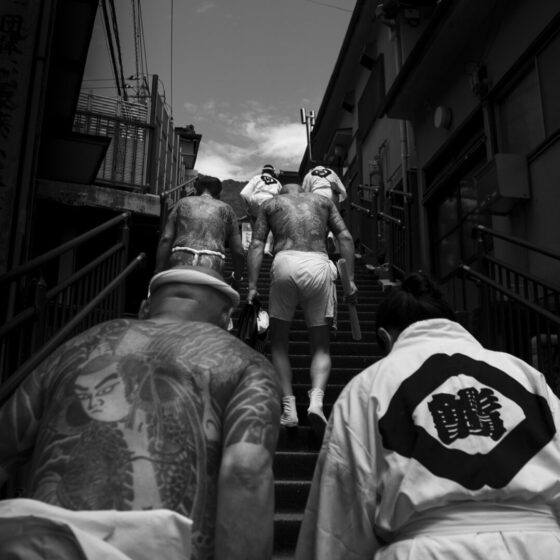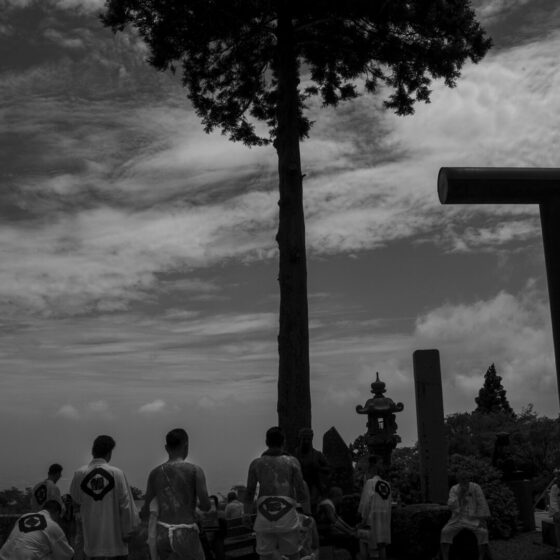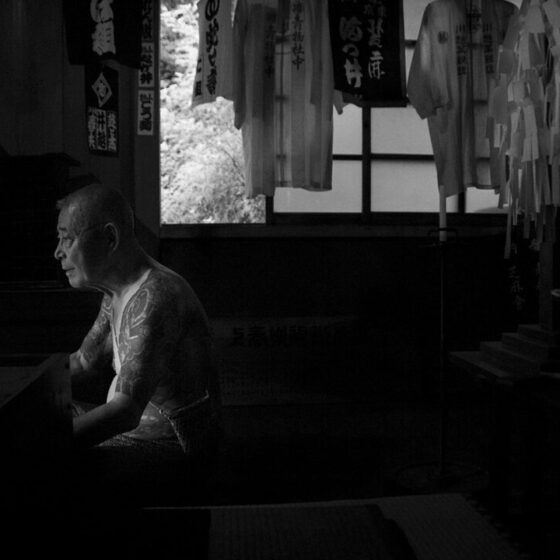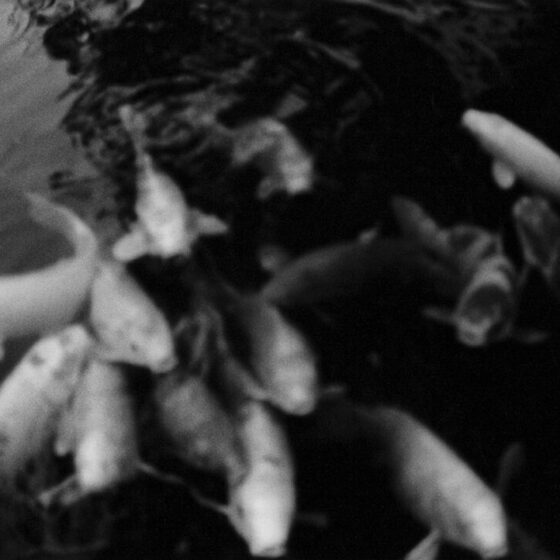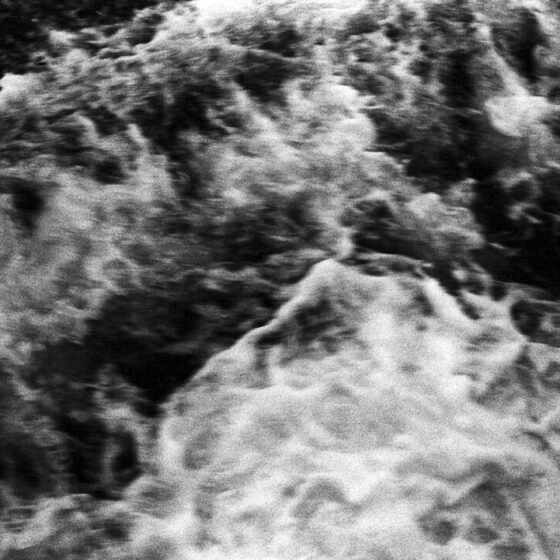Sakiko Nomura Photo Exhibition
This exhibition of photographs by Sakiko Nomura documents the aesthetics of iki [urbanity] and inase [chivalry] protected and passed down by the men of Edo.
Nomura traveled year round closely following the activities of“Edo
Chōyūkai”, a society dedicated to the continuation of Edo tattoo culture.
Established in the late Meiji Era [1868-1912], Edo Chōyūkaiis Japan’s oldest tattoo society. Annually, the society pays pilgrimage to Mt. Oyama, making a formal sanpai, or worship service. While traditional tattoo culture remains virtually unknown in Japan, an online video documenting Edo Chōyūkai’s pilgrimage was viewed over 1.2million times abroad. This exhibition is organized to mark the publication of MAJESTIC, which collects 68 black and white photographs Nomura made while participating in this traditional ritual of pilgrimage and formal worship. Approximately 20 prints from the series will be on display and the book will be exclusively available for purchase at the exhibition. The exhibition is slated for travel to Australia and the US later in the year. We hope you will take this opportunity to view the works.
Horimono
The Japanese culture of horimono dates back several thousand years to the Jomon Era (c. 1400-300BC). The term irezumi, frequently used today, is similar to, but completely different from horimono. Irezumi comprised signs tattooed on criminals’ arms and foreheads as punishment between ancient times and the Edo Era (1603-1867). In contrast, horimono, which appear in ukiyoe prints and classic rakugo stories, peaked in popularity during the Edo Era, when competitions were held to celebrate the beauty of the horimono. Horimonocraft progressed along with the development of ukiyoeculture. Artistic and design qualities improved, and covering one’s entire body with luxurious and splendid tattoos was favored by firefighters, a star profession in Edo, and other workers such as messengers, palanquin bearers, fishmongers, and carpenters. It is said that folks ranging from ordinary citizens to kabuki actors wore horimono in Edo. Although the shogunate repeatedly banned horimono, which had spread widely as a culture, folks who favored the aesthetics of ikihave embodied the culture and kept it alive to this day.
Edo Chōyūkai
In the 35th year of the Meiji Era (1902), the master tattooerHoriuno worked in the Kanda area of Tokyo. Some of the folks, whom Horiuno had tattooed, and who all had gallantnames such as Konsan, Iseman, Daikame, Ooyasu, and Adatoyo, decided to form a society, and the result was Edo Chōyūkai.
The name “Chōyūkai” was chosen by Konzo, as he believed that the tattooed were the most chivalrous men amongst men. Konzo was the head fireman in Kanda’s Konyacho 3chome district. A third generation fireman in a family from the Edo Era, Konzo was a dyed in the wool Edokko [child of Edo]. True to the name Chōyūkai, current members also wear tattoos to express pride in their chivalrous character and dedication to style.
– Nippon no dentou ikiteiru rekishi [Japan’s Tradition: Living History] (Jinbutsuouraisha, 1967)
Today, the society has several dozens of members. In their annual pilgrimage to Mt. Oyama, members dress in formal loincloths called “shimekomi”, revealing the horimono on their backs, which ordinarily remain hidden, and purify their bodies by standing under a waterfall, make offerings, and approach the mountain peak.
Mt. Oyama Pilgrimage
Located in Kanagawa Prefecture, Mt. Oyama belongs to the eastern edge of the Tanzawa mountain range. 1,252 meters high, Mt. Oyama has long been a target of mountain worship. Worshippers pay pilgrimage to pray for rain, abundant harvest, marine safety, and business success. In the mid 18thCentury, Edo citizens began establishing organizations for making pilgrimage to Mt. Oyama. Mt. Oyama pilgrimage was also made partly as leisure, and at a time when Edo had a population of one million, Mt. Oyama received 200,000 worshippers annually. Mt. Oyama pilgrimages continue to be carried out by spiritual leaders. In 2016, Mt. Oyama was recognized as a Japan Heritage Asset by the Agency of Cultural Affairs.
Sakiko Nomura Profile
B. 1967, Shimonoseki, Yamaguchi Prefecture.
Sasaki graduated from Kyushu Sangyo University Faculty of Art and Design, Department of Photography and Imaging Arts in 1991 and began studying under Nobuyoshi Araki. Since 1993, Sasaki has shown in numerous exhibitions in Japan and abroad. Sasaki’s main publications include Hadaka no jikan(Heibonsha); Yakanhiko (Little More); Kuroyami (Akio Nagasawa Publishing); TAMANO (Libro Arte); another black darkness (Akio Nagasawa Publishing); Gan (BCC); Ango/sakiko (bookshop M Co., Ltd.); Ai nit suite (AsamiOkada Publishing); GO WEST (Libro Arte); and Haru no unmei (Akio Nagasawa Publishing).

